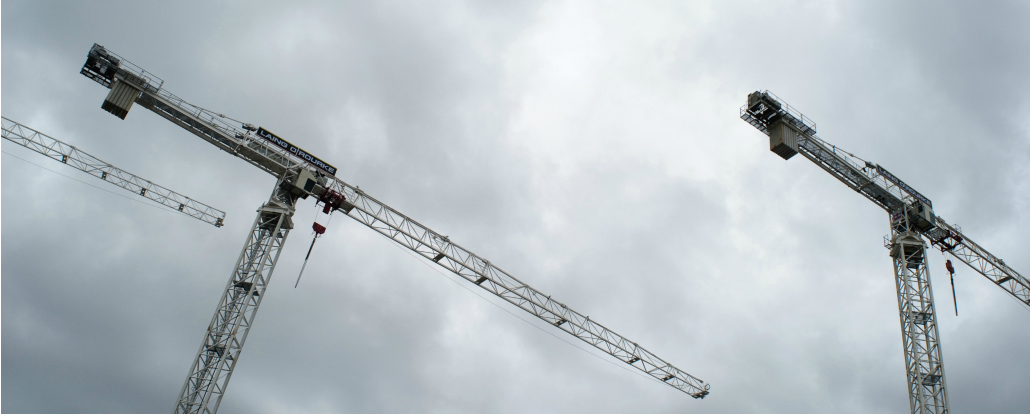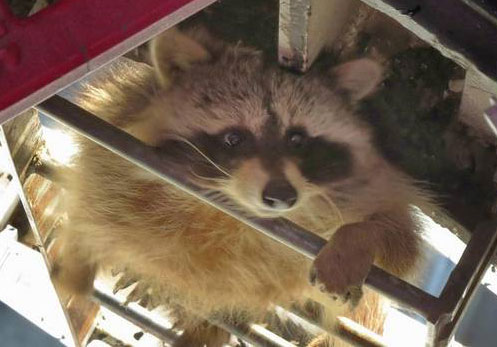Truthfully, operating a tower crane can be challenging in the best of weather conditions. However, as anyone who has worked in the construction industry can tell you, Mother Nature hardly ever cooperates, making it important to know about operating tower cranes in extreme weather. Weather delays can easily double the amount of time it takes to complete a job. Regardless, every project needs to be finished and this means that sometimes, tower cranes have to be operated in less than ideal conditions. By taking a number of precautionary measures, the risk involved with these operations can be minimized.
Windy Conditions
When understanding how to safely use tower cranes in extreme weather, windy conditions come to mind first. All cranes have a designated maximum wind speed under which they can be safely operated. If winds exceed this speed, the crane cannot be operated safely. Wind ratings vary between different cranes, models and configurations, so it is important to know how weather conditions affect your particular crane or its setup.
If a lift must be done in windy conditions, a number of factors should be considered. Generally, manufacturers will provide guidelines for the maximum wind speed a lift can be done in. If these recommendations are not available, wind speeds of 20 miles per hour are the absolute maximum a lift should be conducted in. You may want to consider delaying the lift if the wind is blowing in the 15 – 20 mile per hour range.
The characteristics of the load can diminish the safety of a lift in windy conditions. If the load could catch a large amount of wind or be difficult to control if the wind catches it, consider delaying the lift. Knowing the direction of the wind is also important, as winds from the side or rear can cause the load to swing in a way that would strain the crane or reduce its maximum load.
It is also important to remember that wind speed tends to increase with height, so lifts higher above the ground could be more susceptible to high winds. If the lift is being done between two structures, it could be subject to a wind tunnel effect when wind gusts are funneled between the structures, thus increasing wind speed.
Cold Weather Conditions
According to the Occupational Safety and Health Administration, extremely cold temperatures can also have a negative effect on the performance of tower cranes. Cold temperatures can affect many elements of a tower crane, including its hydraulics, rigging devices and hoists. Cold weather can also reduce the tensile strength of the crane and in extreme cases, cause a catastrophic failure during operation.
At zero degrees Celsius, the cold begins to have an effect on hoists and rigging devices. In subzero temperatures, the weather can affect the crane’s hydraulics and maximum load capacity. If a lift is being conducted in the extreme cold, the potential failure of hydraulic systems should be considered and the maximum load should be reduced by 25 percent.
If the temperature dips to between minus 30 to 40 degrees Celsius, the crane’s maximum load should be reduced by 40 percent and delaying the lift should be considered. If temperatures on site are below minus 40, all lifts should be halted unless they must be used for emergency reasons.
Cold Weather Precautions and Adjustments
If a crane is being operated in a cold climate, several changes can be made to make its operation safer. Cold weather finishes, such as two-part epoxies or hold-dipped galvanized steel are available and can withstand temperatures as low as minus 57. Enclosed track systems, which can be constructed from these materials and are used to surround moving parts, can protect the crane’s trolley from the ice buildup that is common at lower temperatures.
The operation of motorized systems can be problematic in subzero conditions, but can potentially be solved by implementing electrified systems, such as conductor bars. Conductor bar sections serve as a cold weather alternative to box track festooning. They are made from galvanized steel and are designed to carry a specific current without overheating. Conductor bar sections can prevent the buildup of ice and other debris on the crane’s joints.
A number of crane parts are also available for cold weather-specific operations. Heated control enclosures and gearboxes, arctic duty motors and low temperature lubricants are just a few examples of equipment that can be utilized in these less than ideal conditions.
photo via www.stockarch.com



